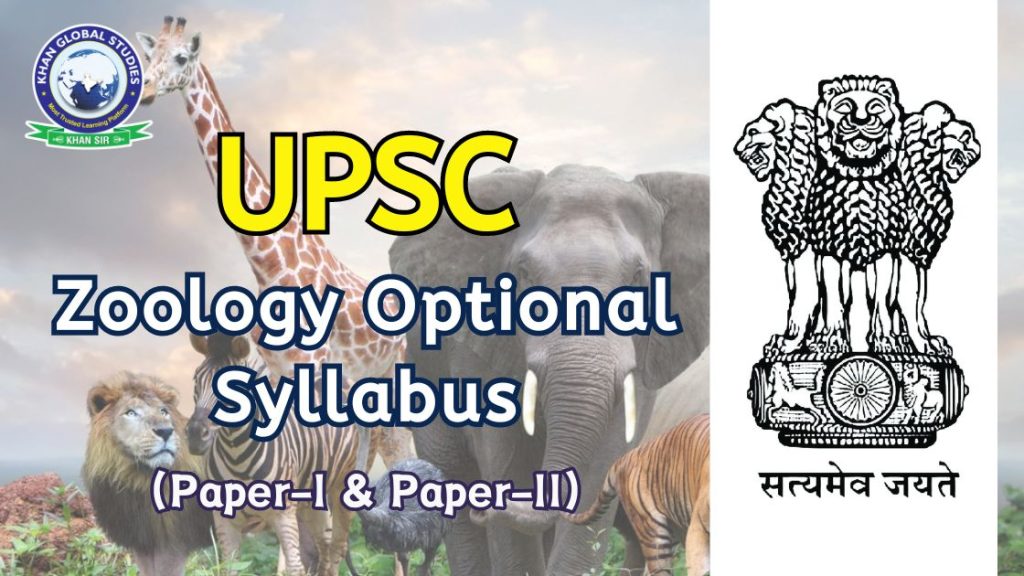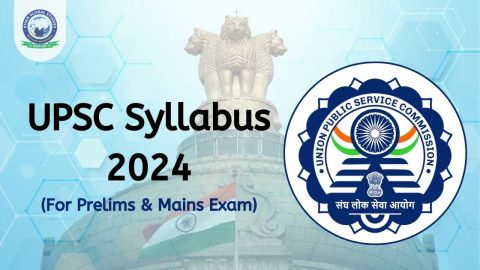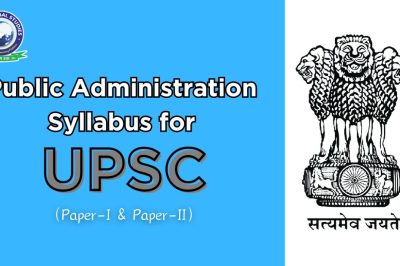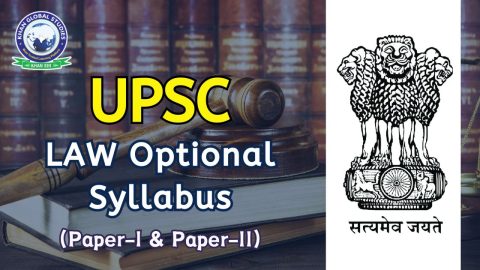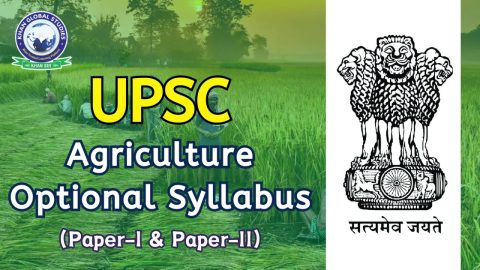The UPSC Optional Syllabus of Zoology consists of two papers, Paper I and Paper II, each carrying a weightage of 250 marks. Both the papers are divided into different sections, and candidates have to choose one subject from each section. Let us look into the details of each paper.
UPSC Zoology Optional Syllabus
Zoology is one of the basic natural science subjects and one of the popular optional subjects especially among students with life sciences and medical backgrounds. UPSC Zoology syllabus is quite vast but can be mastered with a limited and smart approach. Although one can choose this subject as an optional, due to its technical nature, only life sciences and medical graduates should be encouraged to choose it.
Zoology involves the scientific study of every aspect of animals, such as anatomy, physiology, behaviour, biochemistry, genetics and biotechnology, ecology and evolution. It is a high-scoring subject and is also eligible for IFoS candidates.
| UPSC Zoology Syllabus | Topics |
| Paper I | Non-Chordata and Chordata Ecology Ethology Economic Zoology Biostatistics Instrumentation Methods |
| Paper II | Cell Biology Genetics Evolution Systematics Biochemistry Physiology |
UPSC Zoology Optional Syllabus for Paper I
1. Non-chordata and Chordata:
- Classification and relationship of various phyla up to subclasses: Acoelomate and Coelomate, Protostomes and Deuterostomes, Bilateria and Radiata; Status of Protista, Parazoa, Onychophora and Hemichordata; Symmetry.
- Protozoa: Locomotion, nutrition, reproduction, sex; General features and life history of Paramaecium, Monocystis. Plasmodium and Leishmania.
- Porifera: Skeleton, canal system and reproduction.
- Cnidaria: Polymorphism, defensive structures and their mechanism; coral reefs and their formation; metagenesis; general features and life history of Obelia and Aurelia.
- Platyhelminthes: Parasitic adaptation; general features and life history of Fasciola and Taenia and their pathogenic symptoms.
- Nemathelminthes: General features, life history, a parasitic adaptation of Ascaris and Welshereria.
- Annelida: Coelom and metamerism; modes of life in polychaetes; general features and life history of Nereis, earthworm and leach.
- Arthropoda: Larval forms and parasitism in Crustacea; vision and respiration in arthropods (Prawn, cockroach and scorpion); modification of mouth, and parts in insects (cockroach, mosquito, housefly, honey bee and butterfly), metapmorphosis in insect and its hormonal regulation, social behaviour of Apis and termites.
- Molluscs: Feeding, respiration, locomotion, general features and life history of Lamellidens, Pila and Sepia. Torsion and detorsion in gastropods.
- Echinodermata: Feeding, respiration, locomotion, larval forms, general features and life history of Asterias.
- Protochordata: Origin of chordates; general features and life history of Branchiostoma and Herdmania.
- Pisces: Respiration, locomotion and migration.
- Amphibia: Origin of tetrapods, parental care, paedomorphosis.
- Reptilia; Origin of reptiles, skull types, status of Sphenodon and crocodiles.
- Aves: Origin of birds, flight adaptation, migration.
- Mammalia: Origin of mammals, dentition, general features of egg-laying mammals, pouched mammals, aquatic mammals and primates, endocrine glands pituitary, thyroid, parathyroid, adrenal, pancreas, gonads) and their interrelationships.
- Comparative functional anatomy of various systems of vertebrates. (integument and its derivatives, endoskeleton, locomotory organs, digestive system,. respiratory system, circulatory system including heart and aortic arches, urinogenital system, brain and sense organs (eye and ear).
2. Ecology:
- Biosphere: the concept of biosphere; biomes, Biogeochemical cycles, Human induced changes in atmosphere including greenhouse effect, ecological succession, biomes and ecotones, community ecology.
- Concept of ecosystem; structure and function of ecosystem, ecosystem types, ecological succession, ecological adaptation.
- Population; characteristics, population dynamics, population stabilization.
- Biodiversity and diversity conservation of natural resources.
- Wildlife of India.
- Remote sensing for sustainable development.
- Environmental biodegradation; pollution and its impact on biosphere and its prevention.
3. Ethology:
- Behavior: Sensory filtering, responsiveness, sign stimuli, learning, and memory, instinct, habituation, conditioning, imprinting.
- Role of hormones in drive; role of pheromones in alarm spreading; crypsis, predator detection, predator tactics, social hierarchies in primates, social organization in insects;
- Orientation, navigation, homing; biological rhythms: biological clock, tidal, seasonal and circadian rhythms.
- Methods of studying animal behaviour include sexual conflict, selfishness, kinship and altruism.
4. Economic Zoology:
- Apiculture, sericulture, lac culture, carp culture, pearl culture, prawn culture, vermiculture.
- Major infectious and communicable diseases (malaria, filaria, tuberculosis, cholera and AIDS) their vectors, pathogens and prevention.
- Cattle and livestock diseases, their pathogen (helminths) and vectors (ticks, mites, Tabanus, Stomoxys).
- Pests of sugar cane (Pyrilla perpusiella), oil seed (Achaeajanata) and rice (Sitophilus oryzae).
- Transgenic animals.
- Medical biotechnology, human genetic disease and genetic counselling, gene therapy.
- Forensic biotechnology.
5. Biostatistics:
Designing of experiments; null hypothesis; correlation, regression, distribution and measure of central tendency, chi-square, student-test, F-test (one-way & two-way F-test).
6. Instrumentation Methods:
- Spectrophotometer, phase contrast and fluorescence microscopy, radioactive tracer, ultra centrifuge, gel. electrophoresis, PCR, ELISA, FISH and chromosome painting.
- Electron microscopy (TEM, SEM).
UPSC Zoology Optional Syllabus for Paper II
1. Cell Biology:
- Structure and function of the cell and its organelles (nucleus, plasma membrane, mitochondria, Golgi bodies, endoplasmic reticulum, ribosomes and lysosomes), cell division (mitosis and meiosis), mitotic spindle and mitotic apparatus, chromosome movement chromosome type polytene and lampbrush, organization of chromatin, heterochromatin, Cell cycle regulation.
- Nucleic acid topology, DNA motif, DNA replication, transcription, RNA processing, translation, protein foldings and transport.
2. Genetics:
- The modern concepts of the gene, split gene, genetic regulation, and genetic, code.
- Sex chromosomes and their evolution, sex determination in Drosophila and humans.
- Mendel’s laws of inheritance, recombination, linkage, multiple alleles, genetics of blood groups, pedigree analysis, and hereditary diseases in humans.
- Mutations and mutagenesis.
- Recombinant DNA technology, plasmid, cosmid, artificial chromosomes as vectors, transgenics, DNA cloning and whole animal cloning (principles and methods).
- Gene regulation and expression in prokaryotes and eukaryotes.
- Signal molecules, cell death, defects in signalling pathway and consequences.
- RFLP, RAPD and AFLF and application of RFLP in DNA finger-printing, ribozyme technologies, human genome project, genomics and proteomics.
3. Evolution:
- Theories of the origin of life.
- Theories of evolution; Natural selection, role of mutation in evolution, evolutionary patterns, molecular drive, mimicry, variation, isolation and speciation.
- Evolution of horses, elephants and humans using fossil data.
- Hardy-Weinberg Law.
- Continental drift and distribution of animals.
4. Systematics:
Zoological nomenclature, international code, cladistics, molecular taxonomy and biodiversity.
5. Biochemistry:
- Structure and role of carbohydrates, fats, fatty acids, cholesterol, proteins and amino acids, and nucleic acids. Bioenergetics.
- Glycolysis and Krebs cycle, oxidation and reduction, oxidative phosphorylation; energy conservation and release, ATP, cycle cyclic AMP- its structure and role.
- Hormone classification (steroid and peptide hormones), biosynthesis and functions.
- Enzymes: types and mechanisms of action.
- Vitamins and co-enzymes.
- Immunoglobulin and immunity.
6. Physiology (with special reference to mammals):
- Composition and constituents of blood; blood groups and Rh factor in humans; factors and mechanism of coagulation; iron metabolism, acid-base balance, thermo regulation, anticoagulants.
- Haemoglobin: Composition, types and role in transport of oxygen and carbon dioxide.
- Digestion and absorption: Role of salivary glands, liver, pancreas and intestinal glands.
- Excretion: nephron and regulation of urine formation; osmoregulation and excretory product.
- Muscles: Types, mechanism of contraction of skeletal muscles, effects of exercise on muscles.
- Neuron: nerve impulse—its conduction and synaptic transmission; neurotransmitters
- Vision, hearing and olfaction in humans.
- Physiology of reproduction puberty and menopause in humans.
7. Developmental Biology:
- Gametogenesis; spermatogenesis, the composition of semen, in vitro and in vivo capacitation of mammalian sperm, Oogenesis, totipotency; fertilization, morphogenesis and morphogen; blastogenesis, the establishment of body axes formation, fate map, gastrulation in frog and chick; genes in development in chick homeotic genes, development of eye and heart, placenta in mammals.
- Cell lineage, cell-to-cell interaction, Genetic and induced teratogenesis, the role of thyroxine in control of metamorphosis in amphibia, paedogenesis and neoteny, cell death, aging.
- Developmental genes in humans, in vitro fertilization; and embryo transfer; cloning.
- Stem cells: Sources, types and their use in human welfare.
- Biogenetic law.
Tips to Prepare for UPSC Zoology Optional Syllabus
- Understanding the Syllabus: Before plunging into the preparation, it is important to have a clear understanding of the UPSC Zoology Optional Syllabus. The curriculum covers a wide range of topics from plant taxonomy to ecology. Identify the key areas that need to be your focus to streamline your study approach.
- Making a Study Plan: A well-structured study plan is your blueprint to success. Allocate dedicated time to each subject, ensuring comprehensive coverage. This will avoid last-minute cramming and contribute to a deeper understanding of the subjects.
- Essential Study Materials: Choosing the right study material is paramount. Select the recommended books and use the online platform for a holistic learning experience. Stay updated with the latest publications and include them in your study routine.
- Effective Note Taking: Making concise and organized notes is an art. Develop effective note-taking strategies to summarize information without losing context. Your notes should serve as a quick reference during revision.
- Regular Revision: Revision is the key to retention. Make a revision schedule to revisit the topics from time to time. This reinforces your understanding and ensures that you retain the information effectively.
- Practice from Previous Years’ Question Papers: It is important to understand the exam pattern. Solve previous papers to become familiar with the format and identify areas where you need improvement. This practice will boost your confidence on the actual exam day.
- Time Management during the Exam: Effective time management is important during the examination. Develop a strategy for allocating time to each section, ensuring that you cover all the topics. Maintain composure and concentrate on the task at hand.
- Keeping up to date with Current Affairs: Be aware of current affairs, especially those related to zoology. UPSC exam often covers current topics, and staying informed will give you an edge during the exam.
- Mock Tests and Self-Assessment: Give mock tests regularly to simulate exam conditions. Evaluate your performance, identify areas for improvement, and adjust your study plan accordingly. Self-assessment is a valuable tool for continuous advancement.


